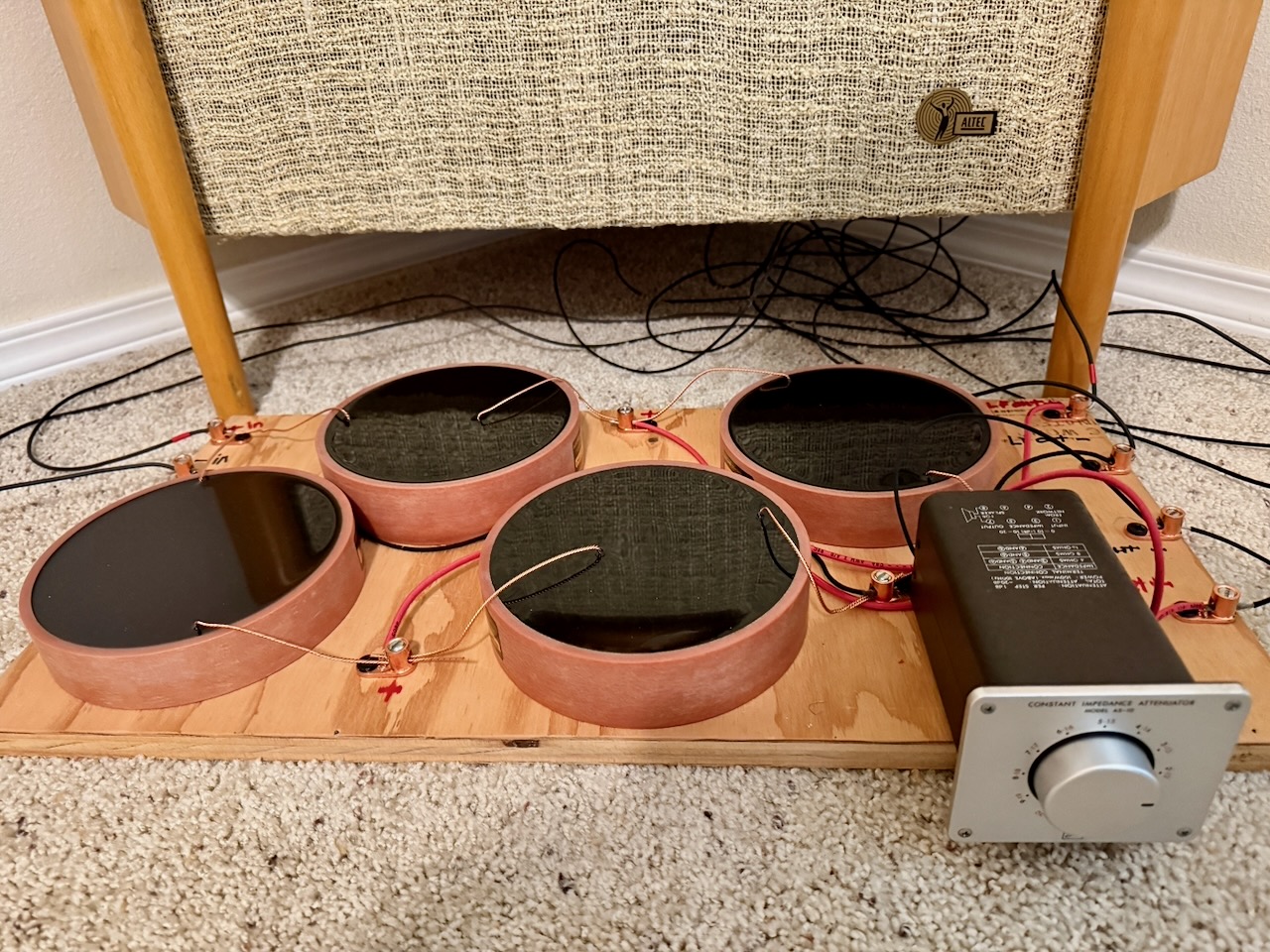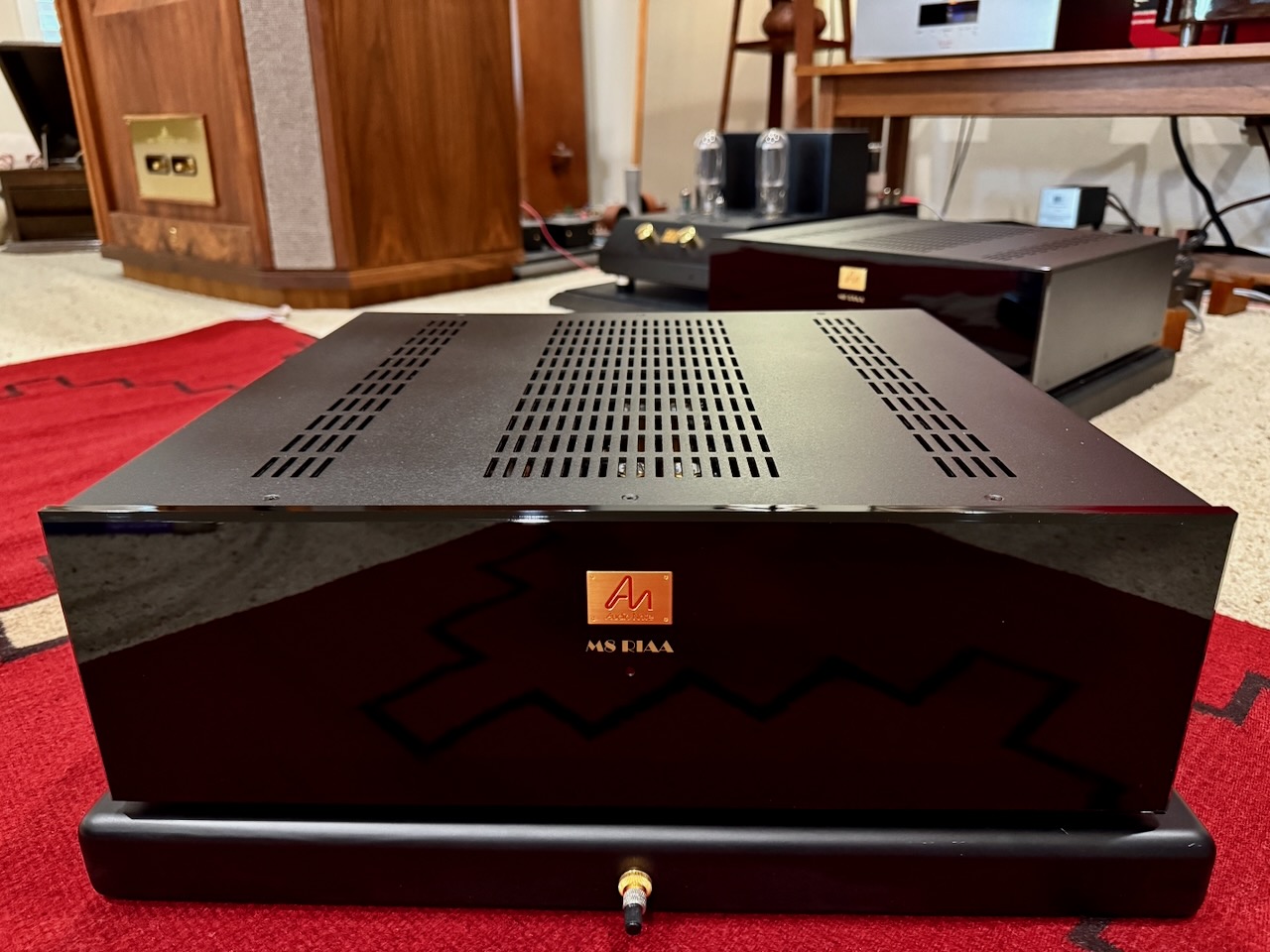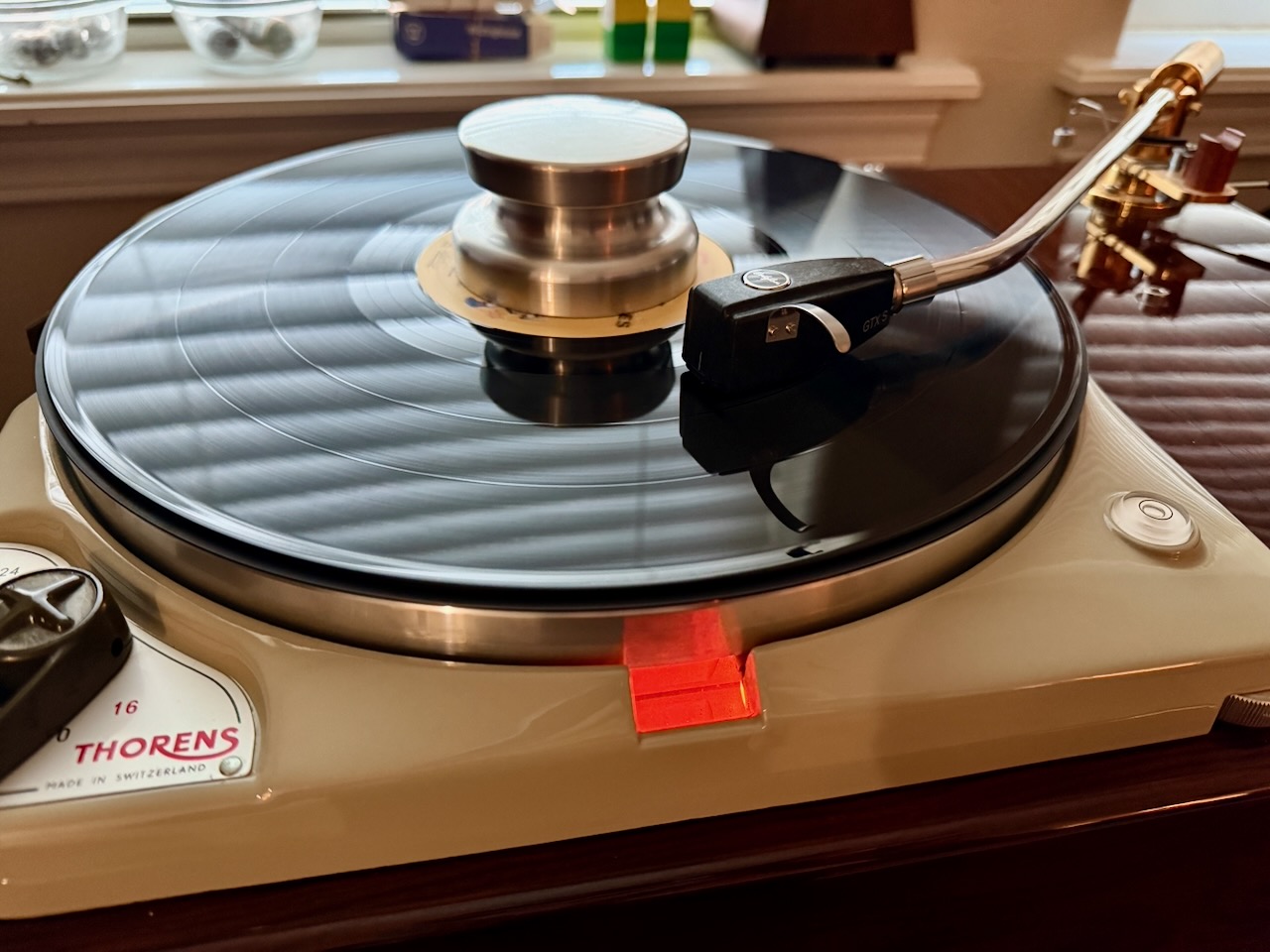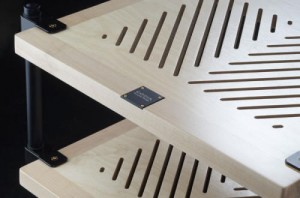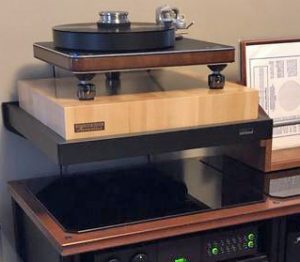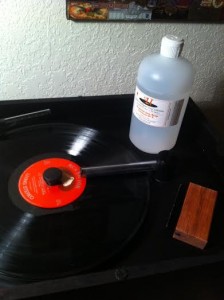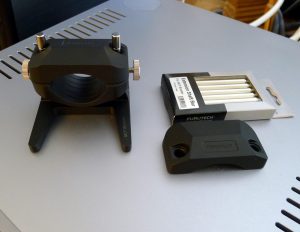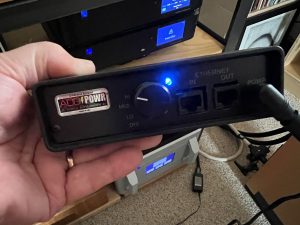Acoustic Revive RHS-1 Headshell ($592 USD)
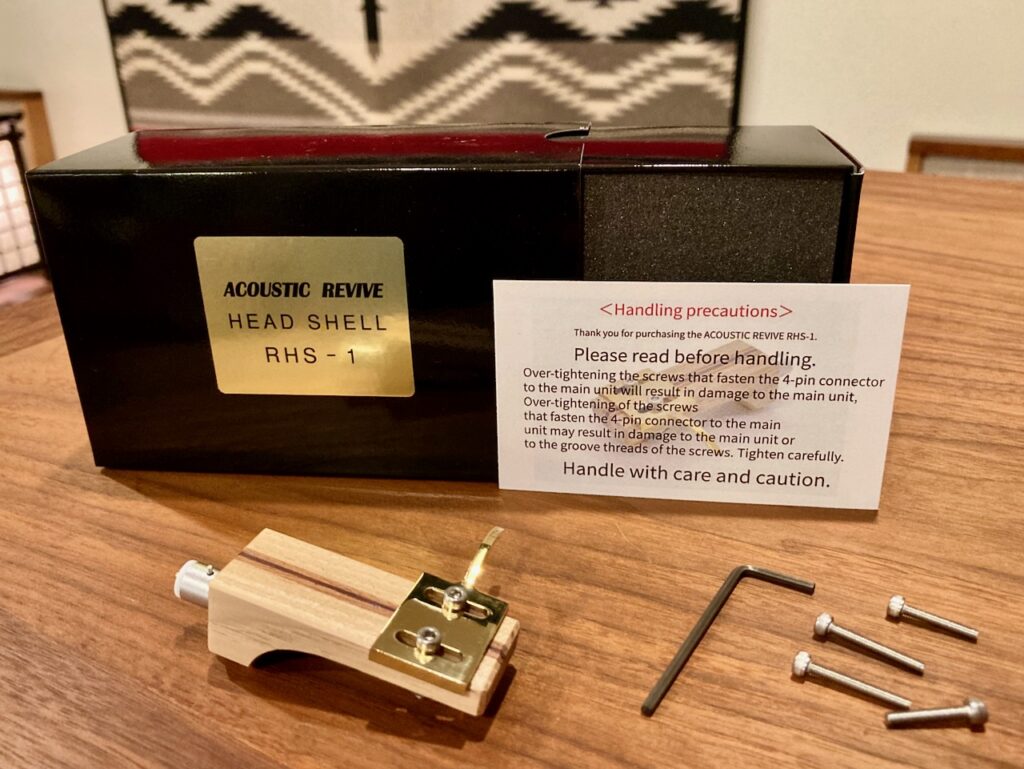
The Acoustic Revive RHS-1 headshell is a artisanal approach to a high-performance headshell, with the goal of allowing as much of the signal from the cartridge to pass through as possible without degradation, as any signal lost on the front end is lost forever.
The RHS-1 headshell is the result of a collaboration between Ken-san and Shinichi Masuda (Fibonasound), who is a master artisan of headshell design.
The headshell body is a combination of hickory, mahogany, and rosewood, a combination of woods considered by Ken-san to be sonically optimum. I might add that this a beautiful looking headshell, thanks to Masuda-san's impeccable woodworking skills in combining the woods into the headshell's body.
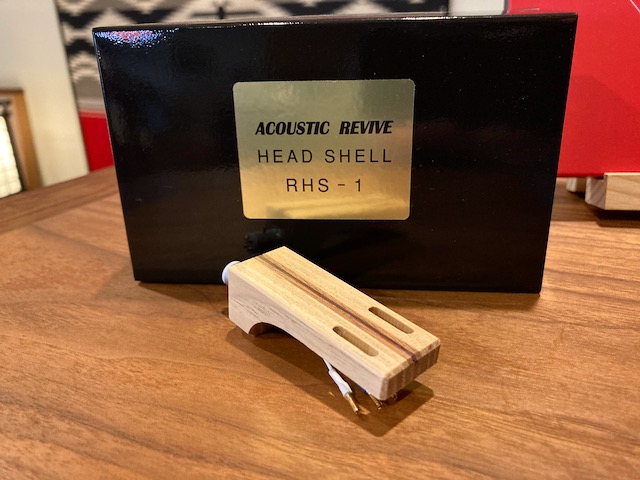
Here's what Masuda-san says about his custom wooden headshell bodies:
"Fibonasound wooden headshells are handcrafted works of art intended as musical upgrades. They are made in Japan. Wooden headshells have many inherent advantages: resonance peaks are absorbed by the wood, providing a natural, effortless, warm sound all year round. You will especially feel them when you are tired."
"The headshell must be strong, and we have carefully selected a specific gravity of 0.7 or higher, with an emphasis on the beautiful grain of the wood, which can only be achieved with wood. The thickness of the wood is also sufficient so that there is no trace loss."
"The speed of sound transmission is related to density and modulus of elasticity, and we do not consider the grain of the board to be a bad thing. We also produce pieces with perpendicular lines to vertical grain. (In this case, consider the sound velocity number to be one-half.)"
"We have changed the finishing process since 2023. The important finishing process does not interfere with the breathing of the wood, which is related to sound, and brings out the original color. It takes about two weeks because of slow drying and slow penetration. After the wood is acclimated to the new finish, a thin coat of Washin water-based craft lacquer finish without luster, which is inspired by traditional Japanese lacquer, is applied."
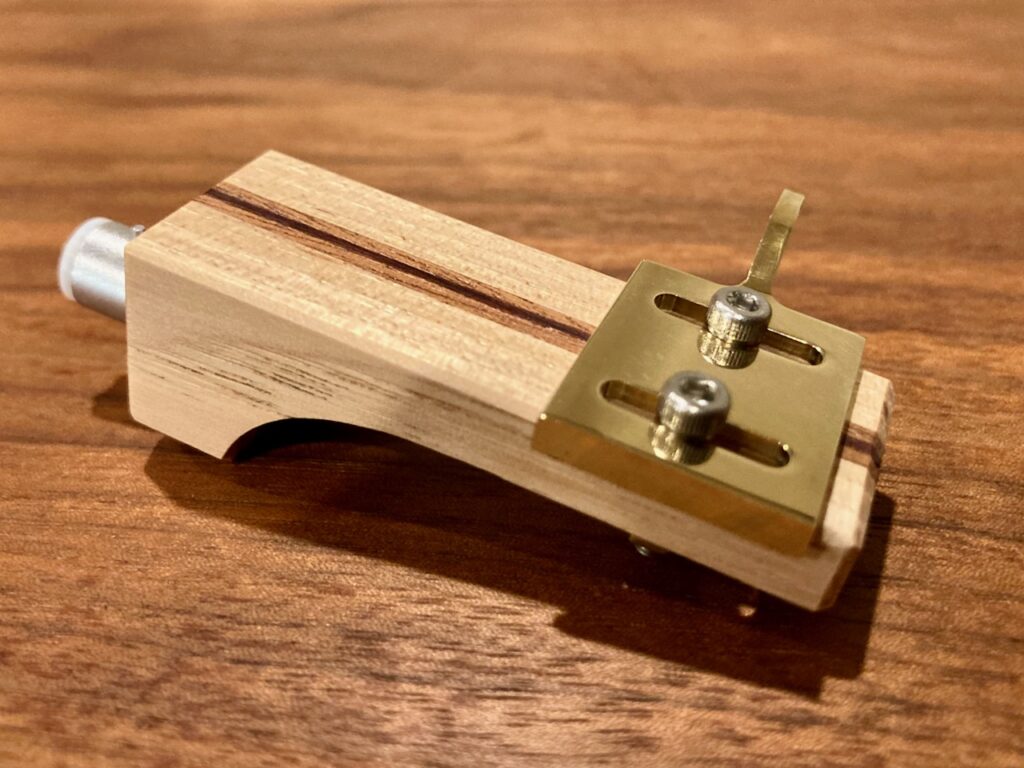
"The finger rest is made of non-magnetic brass and is a little longer for ease of use. The brass finger rest also provides a secure mounting platform for the cartridge while protecting the wood body, preserving the woods tonal character."
"Fibonasound wooden headshells are one of a kind, so you can find your own special one. And don't forget to enjoy the natural grain of the wood."
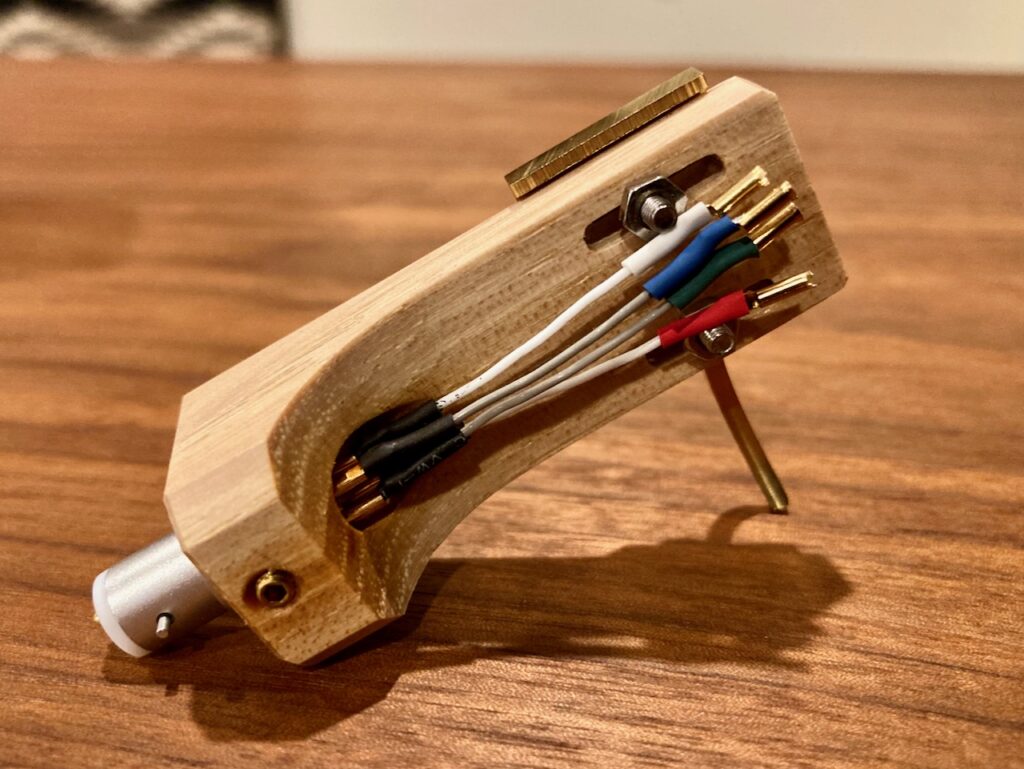
The headshell leads are a single-wire conductor of PC-TripleC/EX, a hybrid forged conductor of silver and copper developed by Acoustic Revive. The PC-TripleC/EX is composed of 5N purity grade silver tubing with a 5N purity grade copper conductor running through its center. These silver/copper conductors are then forged via the compressive forces of being drawn through a die to form a single-wire conductor. Ken-san says that the PC-TripleC/EX has a conductivity of 105% compared to pure copper.
Ken-san says, "In addition, most lead wires insulation are made of PVC with poor di-electricity, but the RHS-1 adopts Teflon insulation with excellent dielectric constant. The specific dielectric constant of PVC is 5.6 and the specific dielectric constant of Teflon is 2.2, which is nearly one-third of the value, so the transmission speed is overwhelmingly improved and the transmission loss and transmission deterioration are drastically reduced."
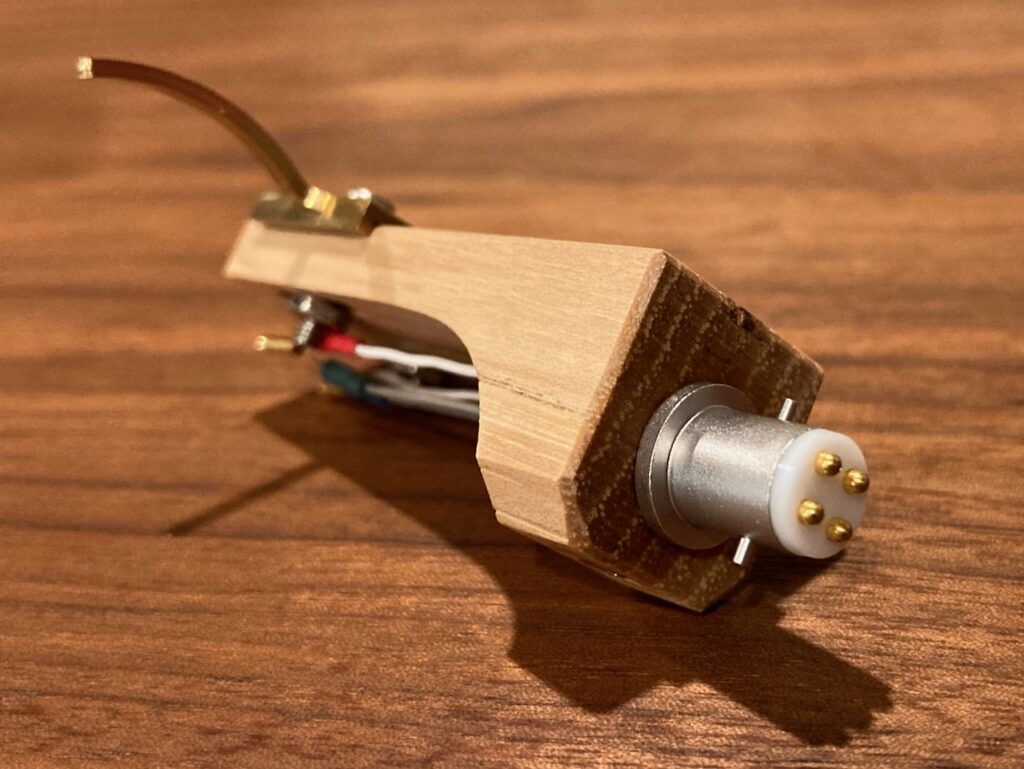
The RHS-1 headshell utilizes a custom SME 4-pin connector with pins made of a silver-copper alloy that have enhanced conductivity over the usual SME connector brass pins.
Ken-san says, "Most SME connector pins are made of brass, and if the conductivity of pure copper is 100%, brass has only a conductivity of 30% or less, so no matter how low the impedance cartridges you use, no matter how high the conductivity of the leads, there is a large transmission loss in typical brass pins. In the RHS-1 I adopted a new material that is an alloy of copper and silver, and the conductivity is almost 100%. The improvement of the conductivity of more than 70% leads to an overwhelming sound quality improvement."
I should add that originally the RHS-1 headshell collaboration between Ken-san and Masuda-san was limited to 100 pieces, and those have sold out. Due to the RHS-1 headshell's popularity, another 50 units of additional production were commissioned, and when those are sold out orders will be closed.
So if you weren't one of the fortunate individuals who bought one of the first 100 Acoustic Revive RHS-1 headshells commissioned, you have a second chance to own one of these artisanal headshells.
Should you dally too long and miss this second chance, you can buy a Fibonasound wooden headshell with a different wood combination, PC-TripleC/EX extruded silver-copper leads, and a SME connector with silver-alloy pins, directly from Fibonasound.
Listening to the Acoustic Revive RHS-1 Headshell
After putting on its stylus guard, I transferred the Audio Note (UK) Io I moving-coil cartridge between the Schick graphite headshell and the Acoustic Revive RHS-1 headshell to gather listening impressions.
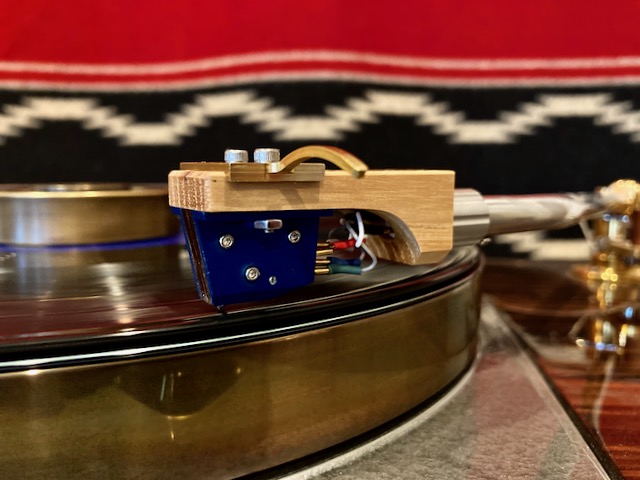
Some caution is in order when handling/attaching the PC-TripleC/EX extruded silver-copper leads to the cartridge. They are stiff. I pre-bent them around a pencil so they would have more flex and give during mounting, otherwise you run the risk of breaking them at the clips. Be careful—they are not easy to repair if broken!
When transferring the Io I MC cartridge between headshells, I installed the headshell on my Schick tonearm, checked the tonearm height, dialed in the tracking force with the counterweight on the Schick arm, set the VTA, azimuth, etc., and then listened to a variety of records to gather listening impressions.
With the Spec AP-UD1 mat on my platter I thought the Acoustic Revive RHS-1 headshell sounded a touch unnatural by being a bit too big, bold, and dynamic sounding, and made images on the soundstage sound 'crowded' for lack of a better word.
The combo was just a bit too extroverted, too dramatic, too forward, and too in my face on most of the records I listened to.
The Acoustic Revive RHS-1 headshell recovered a lot more information from LPs than the Schick graphite headshell. The RHS-1 was considerably more transparent, and there was much more timbral nuance in evidence. Overtones were more evident, and they decayed for longer, for example.
I suspect much of the extra resolution and transparency with the RHS-1 headshell was courtesy of the silver-copper alloy SME pins getting more of the signal information through from the cartridge, as I used PC-TripleC/EX extruded silver-copper leads for both headshells.
I swapped out the "harder" sounding Spec AP-UD1 mat for the "softer" sounding Acoustic Revive RTS-30 mat.
The voicing of the Acoustic Revive RHS-1 headshell is intended to be complimentary to that of the Acoustic Revive RTS-30 'soft' mat, in case you were wondering.
The "softer" sounding Acoustic Revive RTS-30 mat brought the sound quality of the neutral and very resolving Acoustic Revive RHS-1 headshell back into balance to deliver an enticingly natural overall sound quality.
The Acoustic Revive RTS-30 mat and RHS-1 headshell combination sounded musically natural, and the bit too big, bold, dynamic, and forward character that I heard with the Spec AP-UD1 mat were brought back to an enticingly balanced presentation with the RTS-30 mat. Also, with RTS-30 mat and RHS-1 headshell combination the visuospatial nature of the sound opened up and images on the soundstage expanded and breathed, and the whole 'crowded' soundstage phenomena disappeared.
In combination with the Acoustic Revive RTS-30 mat the RHS-1 headshell presented a pleasing sense of naturalness and liquidity as the music flowed along while playing LPs, and records tended to sounded more like live music actually sounds.
The Acoustic Revive RTS-30 mat and RHS-1 headshell combination allowed me to relax into the music and enjoy it, rather than feeling like I was in fight or flight mode while listening as I was with the Spec AP-UD1 mat.
With the Acoustic Revive RTS-30 mat and RHS-1 headshell combination it was easy to see deeply into the recording, and to discern its heritage, whether a studio or live recording, or a pre-stereo period of magnetic era recording, or how it was mic'd, and so forth.
There's a lot of important visuospatial and musical information coming through with the Acoustic Revive combination of headshell and mat, which allowed me as a listener to gain lots of insights into the way recording and mastering techniques were applied to any given recording, as well as opening up insights into the musical performances that made me feel like I was hearing what the musicians intended for me to hear and feel from their music.
The Acoustic Revive RHS-1 headshell is a beautifully crafted, remarkably resolving and neutral sounding headshell, and it will make very clear what the influence on the sound quality is that your particular mat contributes.
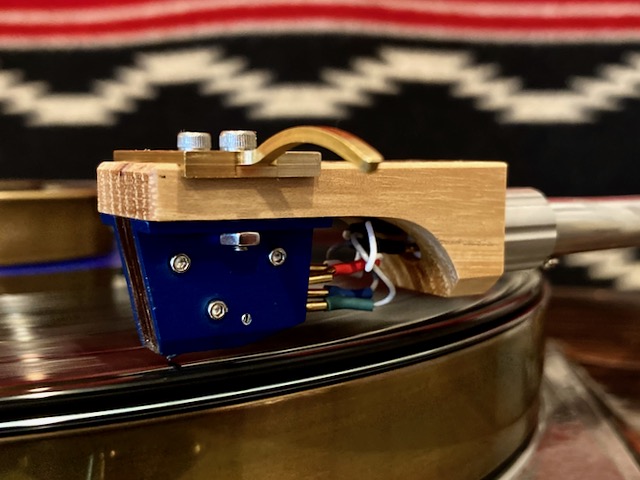
I found the Acoustic Revive RHS-1 headshell RTS-30 mat and RHS-1 headshell to be much more natural and enticing sounding when used together, and so I recommend the Acoustic Revive RHS-1 headshell be used in combination with the Acoustic Revive RTS-30 mat to get the best out of it both musically and sonically.
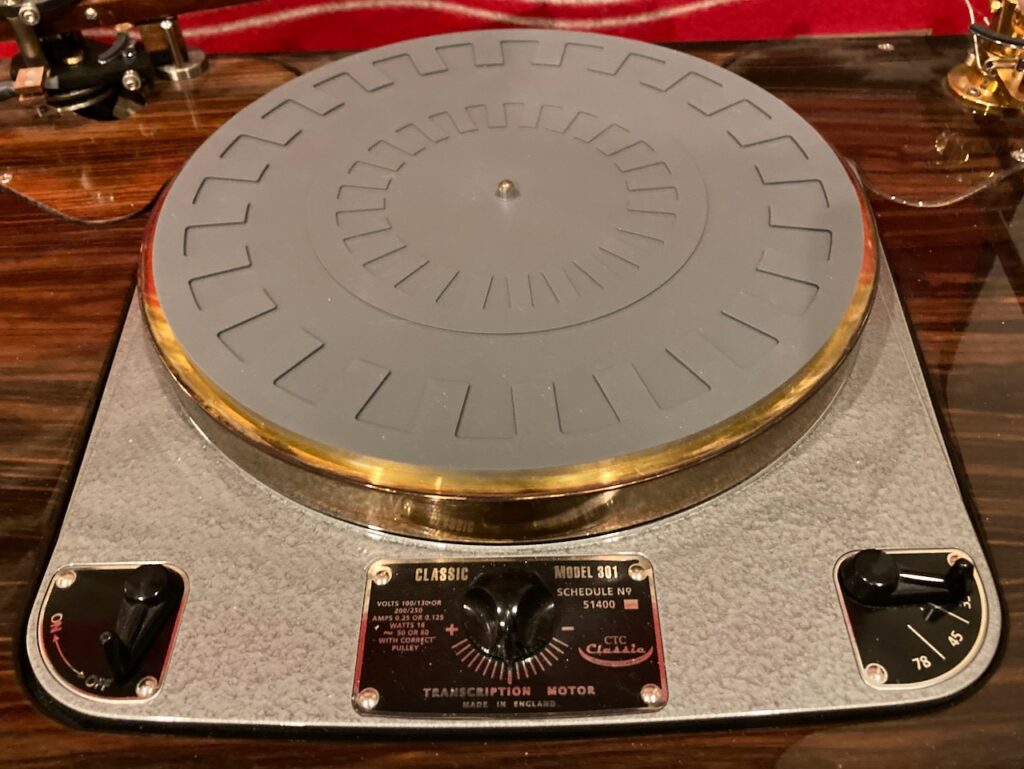
Both are highly recommended, and particularly in combination.
Please click on the link below to go to the next page.




